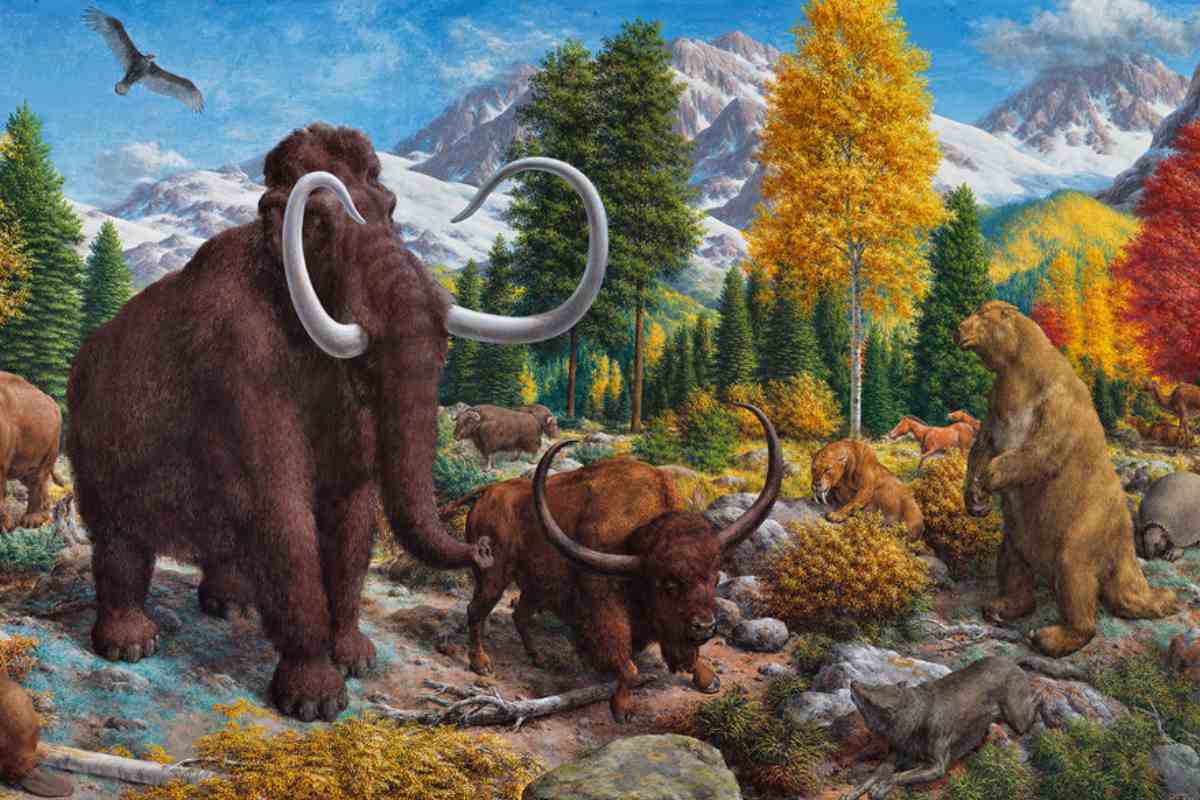
It proves how important grazers are even today in our ongoing fight against fire.
Between 50,000 and 6,000 years ago, many of the world’s largest animals, including the iconic woolly mammoth, disappeared from the face of the earth. What exactly heralded their demise has already been examined in many studies. But what were the direct effects of the extinction of mammoths and other colossal beasts on their environment?
Woolly mammoths roamed the earth for five million years. Until they disappeared for good almost 4,000 years ago. What exactly killed them has been the subject of fierce debate for years. It was long thought that early humans had a hand in the extinction of the elephant’s furry cousins. But nothing turns out to be less true. For example, researchers recently revealed that climate change was to blame after all. Changing rainfall patterns and subsequent changes in vegetation caused the decline of the woolly mammoth.
In a new study scientists compiled a list of the extinct large mammals spread across four continents. This data shows that South America lost the most grazers (83 percent of all species), followed by North America (68 percent). In Australia and Africa, losses were slightly smaller, at 44 percent and 22 percent, respectively.
wildfires
Next, the researchers compared these findings with data on wildfires from the distant past. Information about this is stored in the sediments of lakes. Using excavated charcoal from 410 worldwide sites, the researchers managed to create an overview of the wildfires that had occurred on the four continents in bygone days.
Bandage
The researchers make an interesting discovery. For example, there seems to be a link between the extinction of mammoths, giant bison and prehistoric horses, among others, and the occurrence of wildfires. The team found that after their extinction, many more wildfires started. The number of wildfires increased especially on the continents that had lost the most grazers (South and North America).
grassland
It means that the extinction of mammoths and other large grazers likely led to more wildfires. These arose mainly in grasslands. The researchers suspect that this is due to the accumulation of dry grass, leaves and wood, which catch fire more quickly due to the loss of large herbivores.
Effects
It means that the disappearance of giant grazers had far-reaching consequences for the immediate environment. “These extinctions had a cascade of consequences,” said researcher Allison Karp. It is known, for example, that the disappearance of large mammals had a major impact on the entire ecosystem. Not only were predators robbed of their meal, for example, also fruit-bearing trees that once depended on herbivores for their distribution, suddenly had a hard time.
Other Extinctions
Incidentally, mammoths, bison and horses were not the only victims. Around the same time, several other giant animals became extinct, including the mastodon (a very large proboscis), the diprotodon (the largest marsupial that ever lived) and giant sloths. These mainly consumed shrubs and trees in wooded areas. Still, the study finds that their unexpected demise did not necessarily lead to more wildfires in these forests.
That the loss of grazing species caused a dramatic increase in wildfires is an important lesson, according to researchers. For example, we should not forget the role of today’s grazers in our ongoing fight against wildfires caused by climate change. “Our study shows how important grazers can be in the incidence of wildfires,” said researcher Carla Staver. “We need to pay close attention to these interactions if we want to make more accurate predictions of future wildfires.”
Source material:
“Loss of ancient grazers triggered a global rise in fires– Yale News
Image at the top of this article: 2016 Peabody Museum of Natural History, Yale University